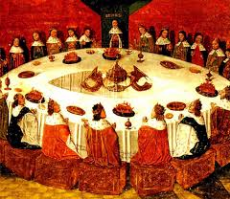
The stereotypical image that comes to mind for most people when thinking about the medieval period is that of knights in shining armour, dragons and saving the princess from the lofty tower. But how much of this image of the Medieval and Dark Ages is actually true and how much of it is fiction?
The tale of one infamous knight Lancelot and King Arthur is a story known to most of us, and today is shown to be popular through many programmes and films. This is a story of love, betrayal and of course daring sword fights and adventures, but it may be a story that has more of a place in history than it does in fiction. Could Arthur have been real? One thing to remember is that King Arthur was set and written in a time we know very little about, which means we cannot know for sure if there was or wasn’t a King Arthur and a Camelot. The story of Camelot came from a book called the ‘History of the Kings of Britain’ by Geoffrey of Monmouth written around the year 1138, which brings together many other myths and legends. Many people have flocked to see the legendary round table, held in Winchester, so is this proof that the events and stories told by Monmouth are true?
In a time where there was not one sole king ruling England there may indeed have been a ruler named Arthur who sought equality among himself and his men, thus producing the legend of the round table we are so familiar with. However, it is clear that these tales and legends were in fact only tales and legends and nothing more. These stories have fuelled many other spin off legends such as the ‘Lady of the Lake’ giving the Medieval and Dark Age period a romantic edge, where it was really a time of danger and the black death.
The misconceptions of this time due to these ‘Arthurian Legends’ show the power of a good story and how it can influence the view of an entire era like this one. Why not visit the round table yourself and decide whether you think Arthur was real?

0 Comment:
Be the first one to comment on this article.